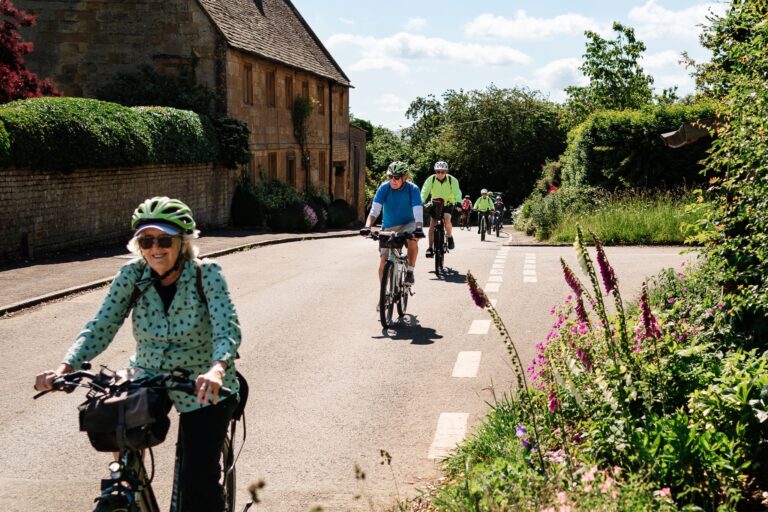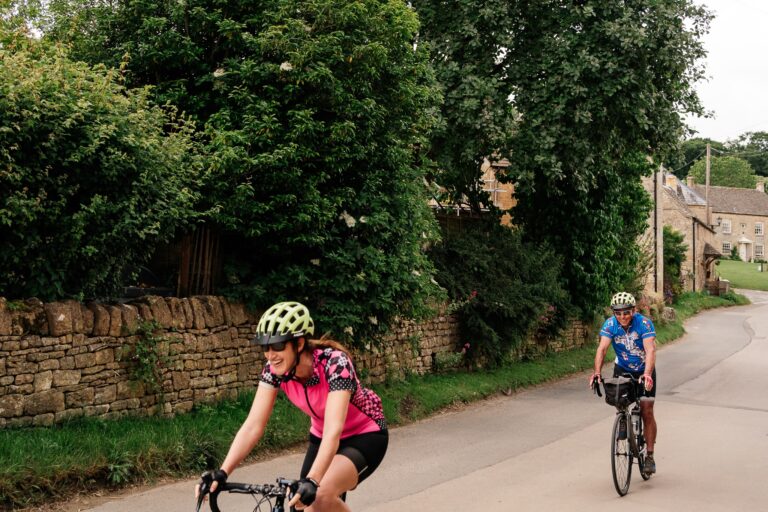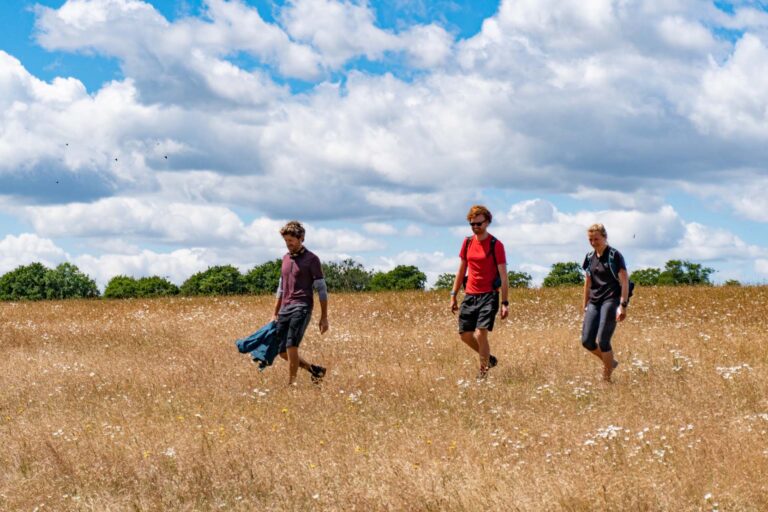May 28, 2024
Destination: United Kingdom
Share
In this article
A Spotter’s Guide to English Beer
As English as red telephone boxes, afternoon tea and cricket, beer is a vital thread in England’s history, heritage and tradition.
Following a tax cut for small breweries in the early 2000s, the UK has seen an explosion in the variety of beer available. From easy-drinking amber ales to bold, hoppy IPAs, it’s never been a better time to be a beer drinker in England.
This spotter’s guide to English beer is for the uninitiated, the visitor who’d love to sip a pint in an English beer garden, but cannot understand the difference between an ale and a bitter, let alone navigate the tricky etiquette of a British pub.
Here we go then, pint glasses at the ready…
Types of English Beer
With such a huge variety of beers to choose from, how do you decide? Our advice is to decide what type of beer you like and go from there! We categorise our English beers into seven major varieties.
1. Lager
2. Pale Ale
3. IPA
4. Bitter
5. Amber Ale
6. Brown Ale
7. Stout (Porter)
Guinness is the most famous of all Stouts – though Irish, not English in origin.
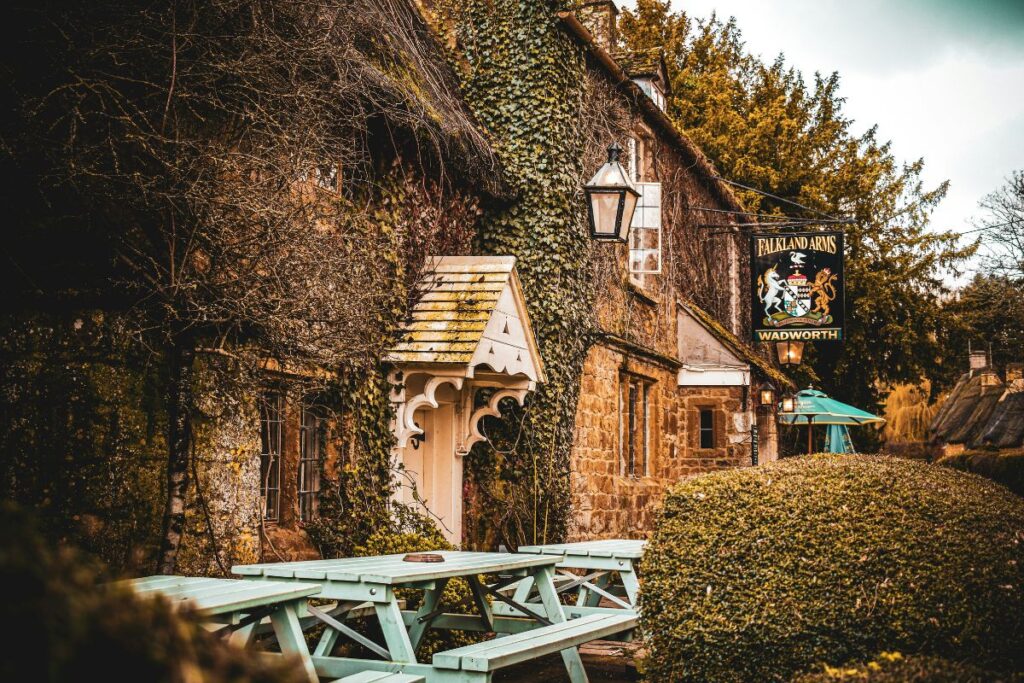
Three Common Questions About English Beer
1. How is English beer made
The exact process will vary from beer-to-beer, but as a general rule, this is how English ale is made.
Step 1: Malting
English beer starts life as grain soaked in water. This encourages the germination of the grain and the process of turning starch into sugars. Breweries will now halt the germination by drying the grain – this dried grain is called malt, hence the term malting. Most English beer malt is made from Barley.
Step 2: Mashing
The malt is then run through a mill and mixed with hot water, encouraging the further development of starch into sugar.
Step 3: Lautering
Step 4: Wort & Hops
Step 5: Fermentation
This is the most important step of the brewing process. Yeast is added to the now-cooled Wort encouraging the remaining sugars in the mixture to turn into alcohol.
Step 6: Conditioning
Post-fermentation, the beer is sent to a separate tank to ‘condition’. Sediment is allowed to settle at the bottom of the tank and the final product forms over a couple of days to a week, or more. The exact time will depend on the particular style the brewery is hoping to achieve.
2. Do English drink their beer warm?
No. This is a common misconception. A good English pint of beer should be served at cellar temperature – that’s much less than regular room temperature. Like a fine French wine, drinking some English ales cooler would mean disrupting their taste.
3. Are English beers strong?
The majority of English ales range from 4-5% ABV. Low-alcohol beers are gaining popularity, as are non-alcoholic varieties – though the taste of these can vary wildly!
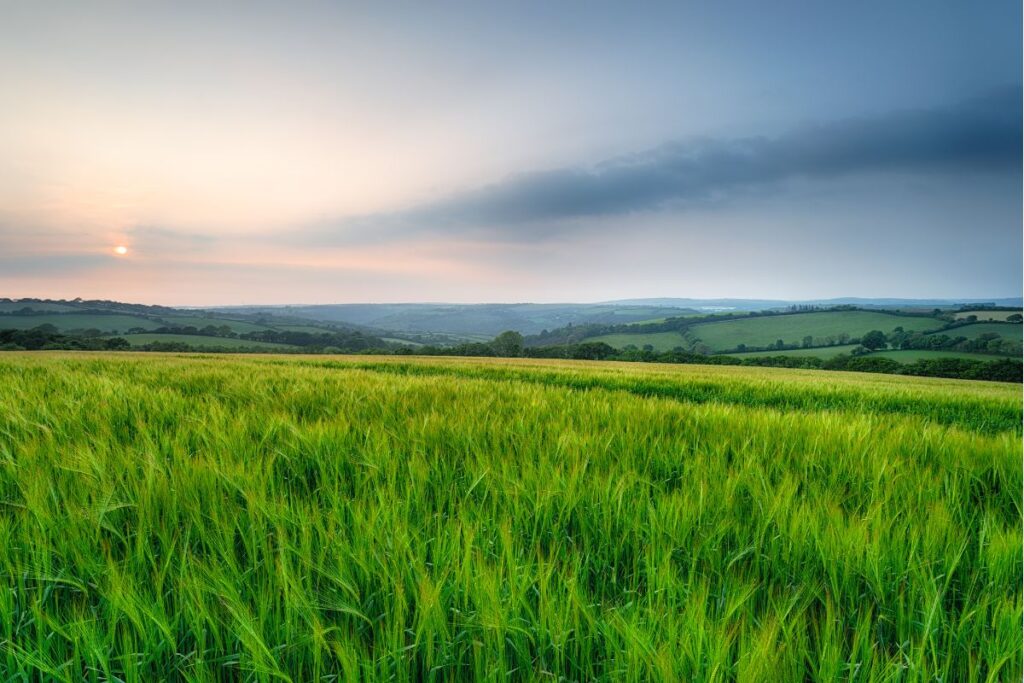
5 Facts About English Beer
1. Over 30 different varieties of Hops are grown commercially in the UK.
2. Though not all of it is grown for the malting process, enough barley is grown in England every year to make 400 billion litres of beer! 50,000 litres of beer can be made from 1 hectare of malting barley.
3. Downing Street, home of the British Prime Minister sits on the site of a former brewery.
4. The oldest brewery in England which is still operating today is Three Tuns Brewery in Shropshire. The brewery started in 1642!
5. Per capita, UK residents drink 117 pints of beer per year. That sounds a lot but it’s around 3 times less than Czechia, the country which consumes a garguatunan 330 pints a year!
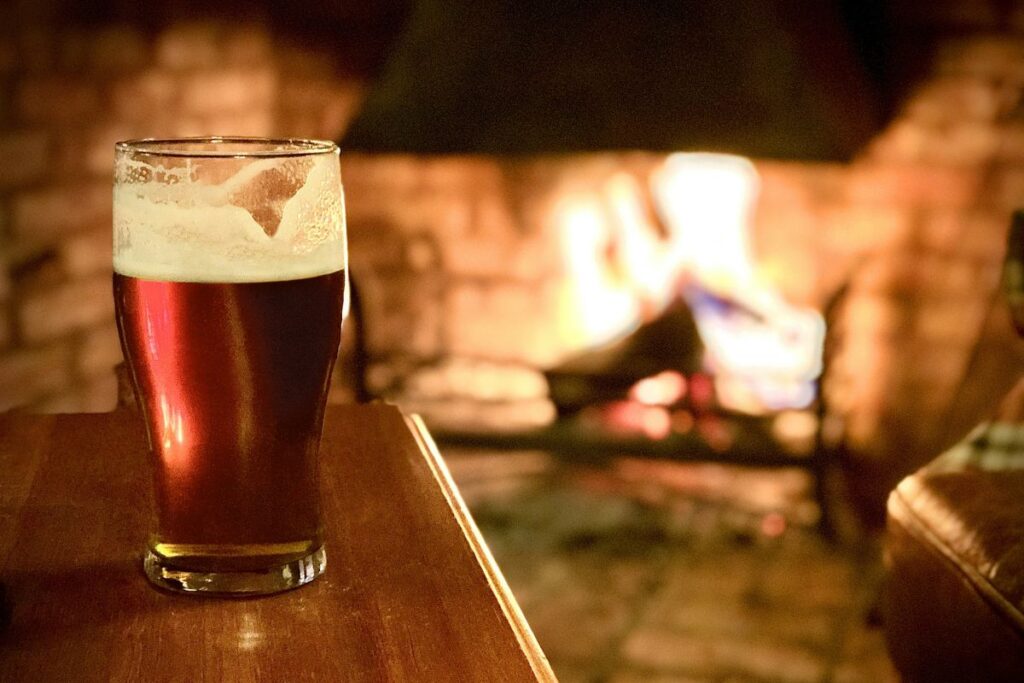
List of English Breweries
From breweries with a fantastic history stretching back centuries, to newer, innovative setups fuelling the craft beer revolution, here’s some popular English breweries – at least in our book anyway!
Older, traditional breweries: Badger Beer, Fuller’s, Greene King, Hook Norton, Sharp’s, Skinner’s Brewery, St Austell Brewery
Younger craft Breweries: Beavertown, Brewdog, Camden Town, Fourpure, Hawkstone (which you might recognise from the hit Amazon Prime Series, Clarkson’s Farm), Northern Monk, Small Beer Co, Wild Beer Co and many, many more.
Map of Major Breweries in England
10 of the Best English Beers
With nearly 2000 breweries in the UK producing perhaps 10,000 different varieties of beer, this list could have run into the hundreds, but for the sake of brevity, we’ve managed to limit it to ten of our favourite beers.
Over the years we must have tasted most of these dozens of times – perhaps more – it’s been a tough job, but someone had to do it!
A further word on our selection. Rather than select hyper-local options from craft breweries (of which there are many excellent ones up and down the country), we’ve selected beers you can usually find on draught in the pub or bottle or canned in a local store. We’ve also tried to steer clear of beer from the big brands, the likes of Carling and Carlsberg, that way if you’re trying to drink something local and support independent business, you can!
From the South-West to London, the Midlands and beyond, all ten of these beers are proudly brewed right here in England.

1. Fuller's London Pride
Up first on our list is a beer with a distinct connection to the capital of England. First brewed in the 1950’s London Pride ale is named after a flower that dotted the city during the Second World War.
London Pride is a smooth-tasting ale with a touch of malt and bitterness – the ideal first entry into the world of English ale.
Although it’s great served from a bottle, you can’t beat a pint of ‘Pride’ served cool in an English Pub – better still, drunk in an English Pub Garden on a hot summer’s day.
1. Fuller's London Pride
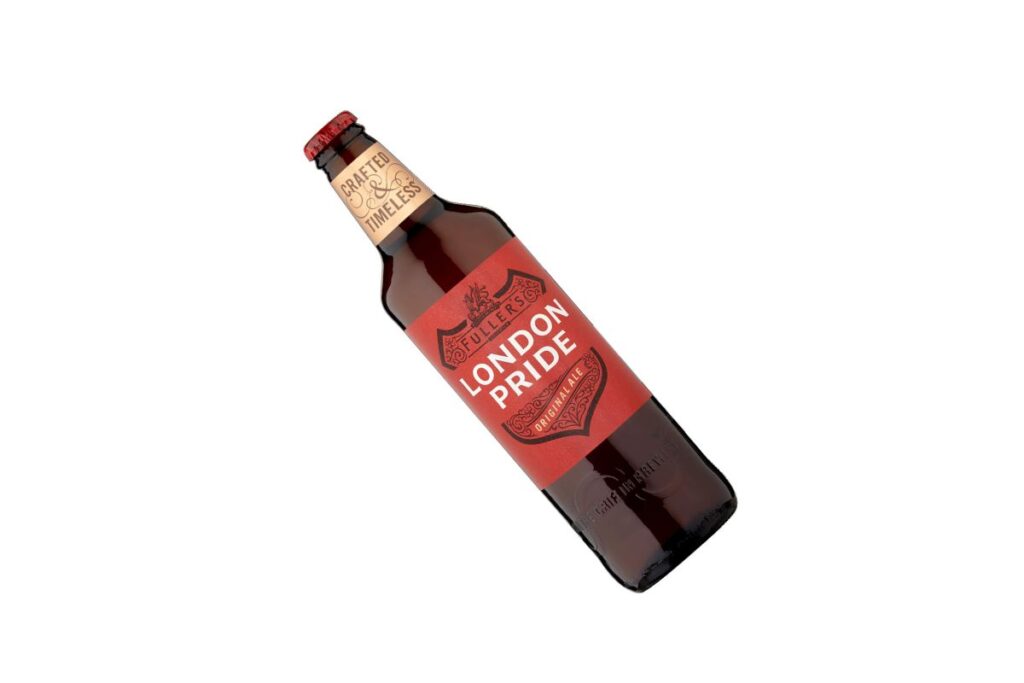
Style: Amber Ale
ABV: 4.7%
First Brewed: 1959
2. Bath Ales Gem

Style: Amber Ale
ABV: 4.1%
First Brewed: 1995
2. Bath Ales Gem
The next beer on our list is another Amber Ale – Gem, from Bath Ales.
Bath Ales uses only British Hops when brewing Gem, resulting in another well-rounded ale. On our palate, it’s punchier than Fuller’s London Pride, but without being overpowering.
Again it’s a fantastic introduction to English Ale.
3. Hook Norton Old Hooky
First brewed to celebrate Queen Elizabeth II Silver Jubilee, Old Hooky is another ale to try. It’s brewed in the small village of Hook Norton, close to the Cotswolds, in central England. Incredibly the brewery can be traced back to 1849!
As far as its taste goes, Old Hooky is at the sweeter, fruity ends of English Ale and like its sister brew, Hooky, it’s one of our favourite Cotswold beers.
The experts seem to agree with us! Old Hooky was awarded a Gold Medal at the International Beer Challenge in 2023.
3. Hook Norton Old Hooky
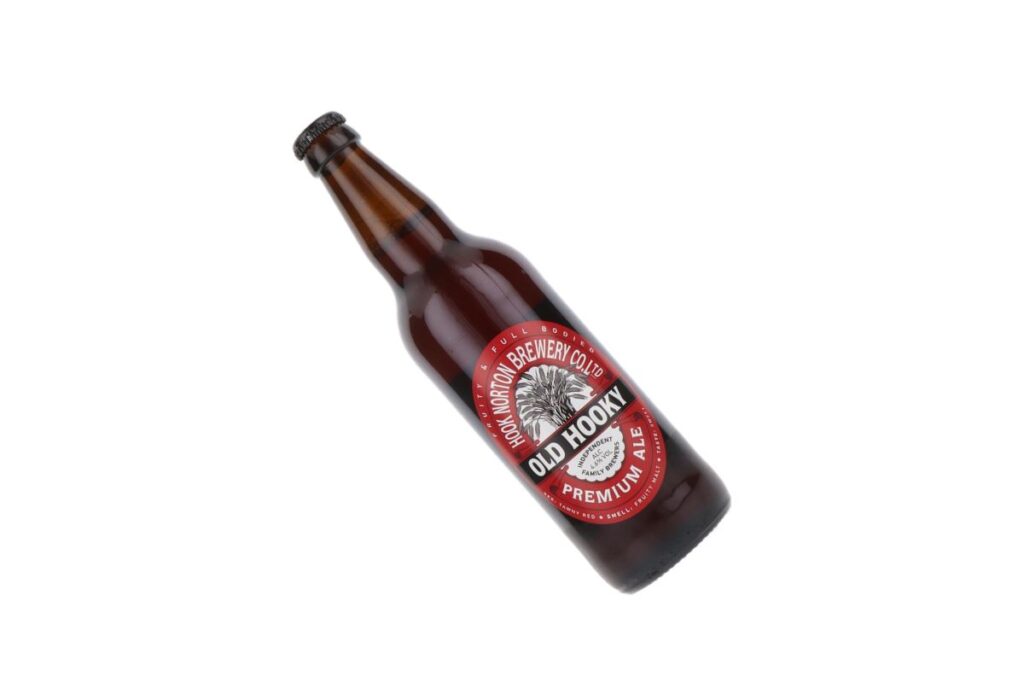
Style: Bitter
ABV: 4.6%
First Brewed: 1977
4. Newcastle Brown Ale
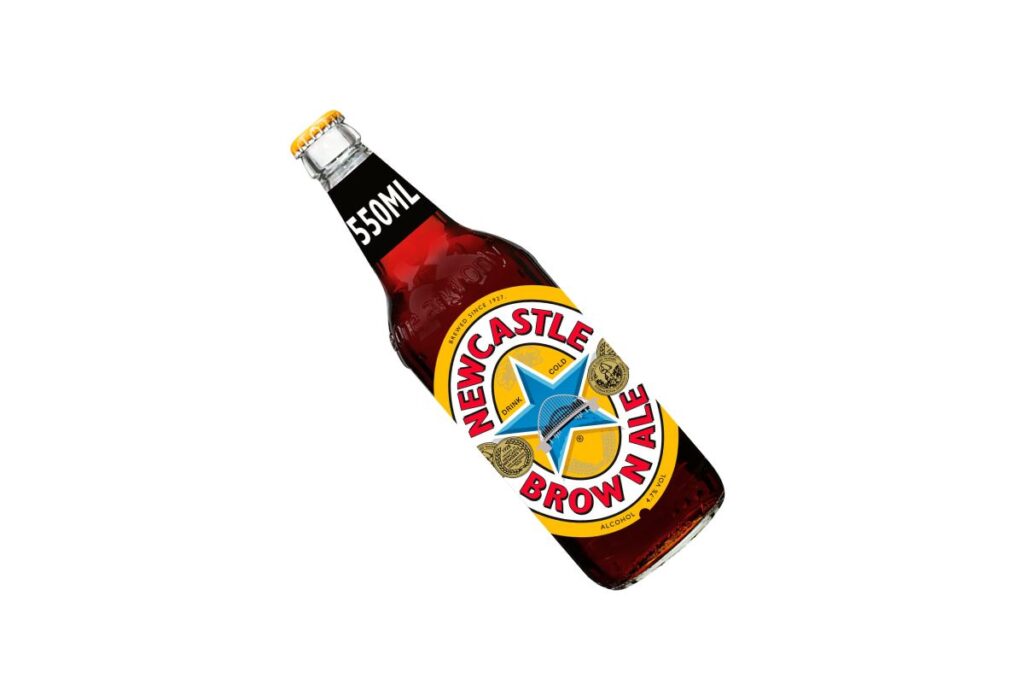
Style: Brown Ale
ABV: 4.7%
First Brewed: 1927
4. Newcastle Brown Ale
Arguably there’s no more iconic beer in the UK than Newcastle Brown Ale – this drink has legendary status in England’s North East.
Tracing its history all the way back to 1927, Newcastle Brown Ale, is arguably the most English of English ales – the real taste of this country.
The distinctive star logo represents the five founding breweries in Newcastle. These days, Newcastle Brown Ale is no longer brewed in the city from which it takes its name. Tadcaster in Yorkshire is where this iconic beer now originates from.
5. Greene King Abbot Ale
Biscuity – that’s the word to describe Greene King’s Abbot Ale. This is another fine English ale that should be on your list to try.
Abbot Ale is the equal strongest English beer on our list, but at 5% ABV it’s still not the most powerful of drinks. That said, thanks to that moreish taste, it’s easy to find yourself three or four pints deep with
Abbot Ale is brewed by Greene King in Bury St Edmunds, a town with a lengthy brewing heritage.
5. Greene King Abbot Ale

Style: Amber Ale
ABV: 5%
First Brewed: 1951
6. Beavertown Neck Oil
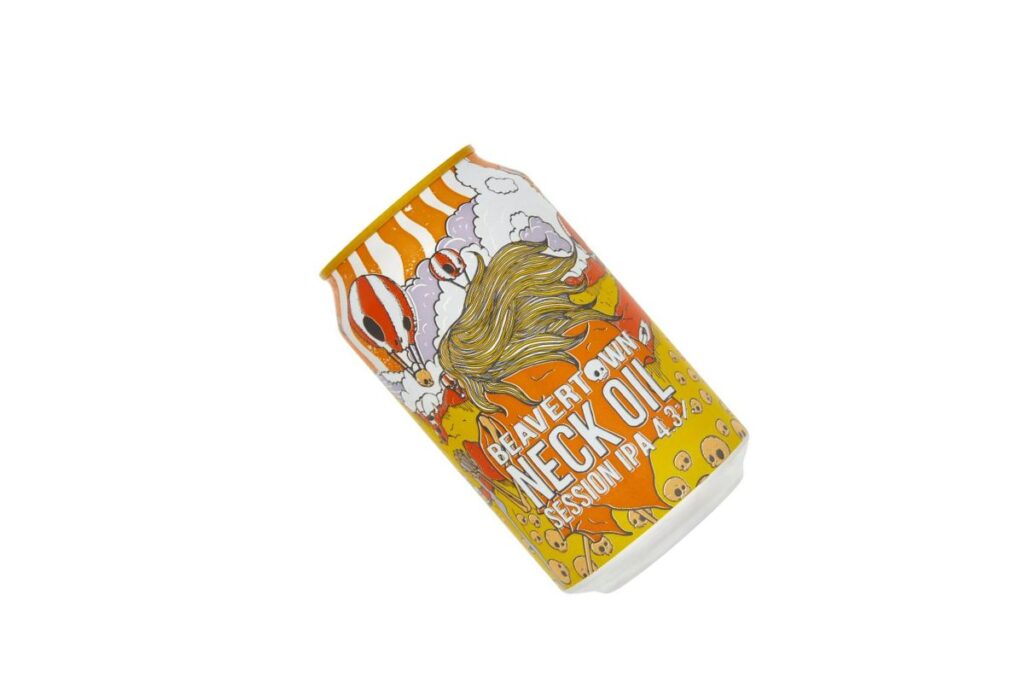
Style: IPA
ABV: 4.3%
First Brewed: 2011
6. Beavertown Neck Oil
Neck Oil, from Beavertown Brewery, is the sixth English beer on our list. Distinctly yellow to the eye, this Session IPA is light and easy-drinking making it the ideal post-exercise refreshment. Such is its popularity these days. that you tend to find it on draught in many pub establishments
Beavertown Brewery has an interesting backstory. It was founded by Logan Plant, son of legendary rock star Robert Plant – yes, he of Led Zepplin fame. Such as been the success of the brewery, Plant (and his wife) sold their remaining shares to Heineken in 2022 and are no longer involved in the business.
7. Sharp's Doombar
We’re winging our way down to the South-West now and Sharp’s Brewery on the North Cornish Coast, a stone’s throw from Padstow.
Their most popular brew, named after a sand bar in the Camel Estuary, Doombar is a very drinkable amber ale. Its subtle flavours ensure its suitable for both sociable drinking and pairing with food.
Doombar is regularly listed as the highest-selling cask ale in the country – if that’s not a ringing endorsement we don’t know what is!
7. Sharp's Doombar
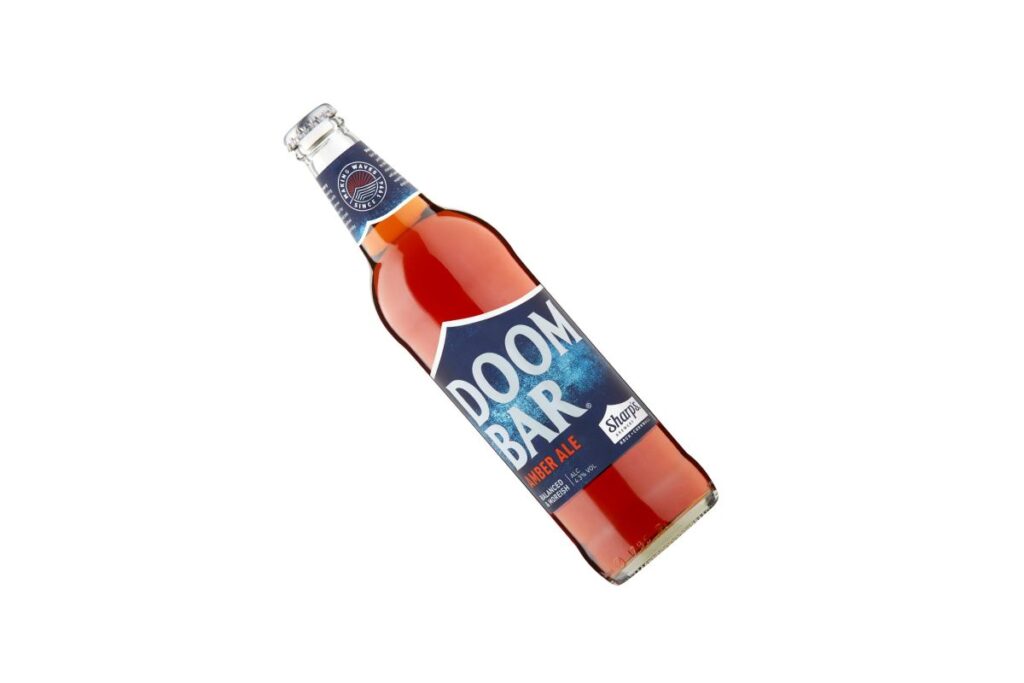
Style: Amber Ale
ABV: 4%
First Brewed: 1995
8. Stroud Brewery Big Cat
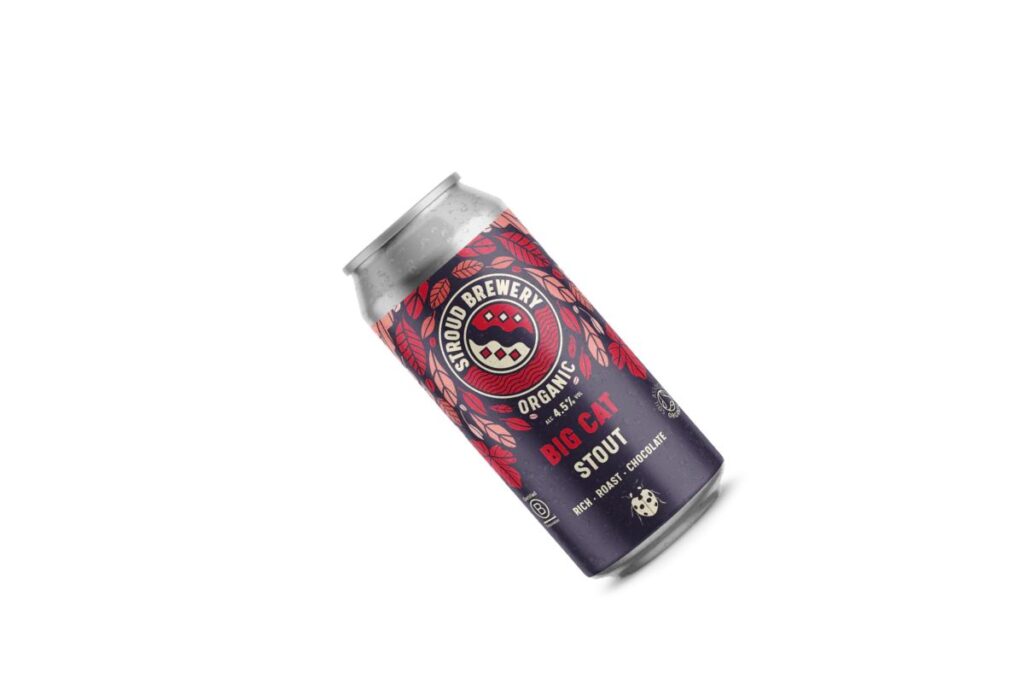
Style: Stout
ABV: 4.5%
First Brewed: Not Known
8. Stroud Brewery Big Cat
Time for something different now. Big Cat from Stroud Brewery is Stout and a beer with a distinctively bold taste.
On the nose, this beer is very different to anything else on our list and when it comes to your first sip, you’ll be blown away by the rich, roast, chocolatey taste. Depsite these punchy flavours, Big Cat still slips down very easily. Yum!
Stroud Big Cat is a vegan stout which takes its name from the supposed wild cats that have been spotted around this Cotswold town.
9. Daylesford Organic Cotswold Blond
The only lager on our list, is this offering from Daylesford – the famous organic Farm Shop and producer in the Cotswolds.
This isn’t any old lager either. It’s not packed with fizz and it’s certainly not tasteless – two criticisms you could level at many of the more basic English lagers.
Cotswold Blonde is a gluten-free lager, with a bready aroma and a honeyed finish. Best served chilled.
9. Daylesford Organic Cotswold Blond

Style: Lager
ABV: 5%
First Brewed: Not Known
10. Badger Beers Hopping Hare
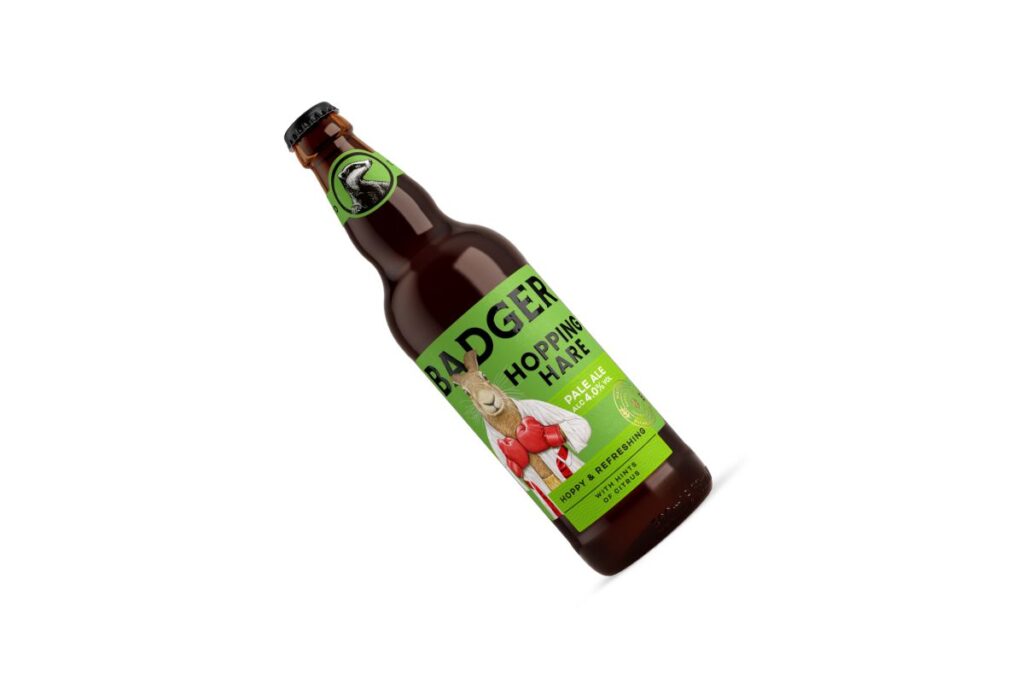
Style: Pale Ale
ABV: 4%
First Brewed: Not Known
10. Badger Beers Hopping Hare
We’re rounding off our list of the best English beers with a light, refreshing Pale Ale. In our (it has to be said, unqualified position!) this pale ale sits nicely between a gently fizzing lager and a more gutsy amber ale.
Whether you have it on draught or from the characterfully design bottle, Hopping Hare delivers a floppy, foaming head which is just begging to be sipped.
In 2019, Hopping Hare was given a 2* Great Taste award by the Guild of Fine Food, the world’s largest independent food and drink accreditation scheme.
That’s the end of our introductory guide to English beer.
If beer and walking, or beer and cycling are your kind of thing then check out our custom tour options where we can put the great English pub at the centre of your experience.

